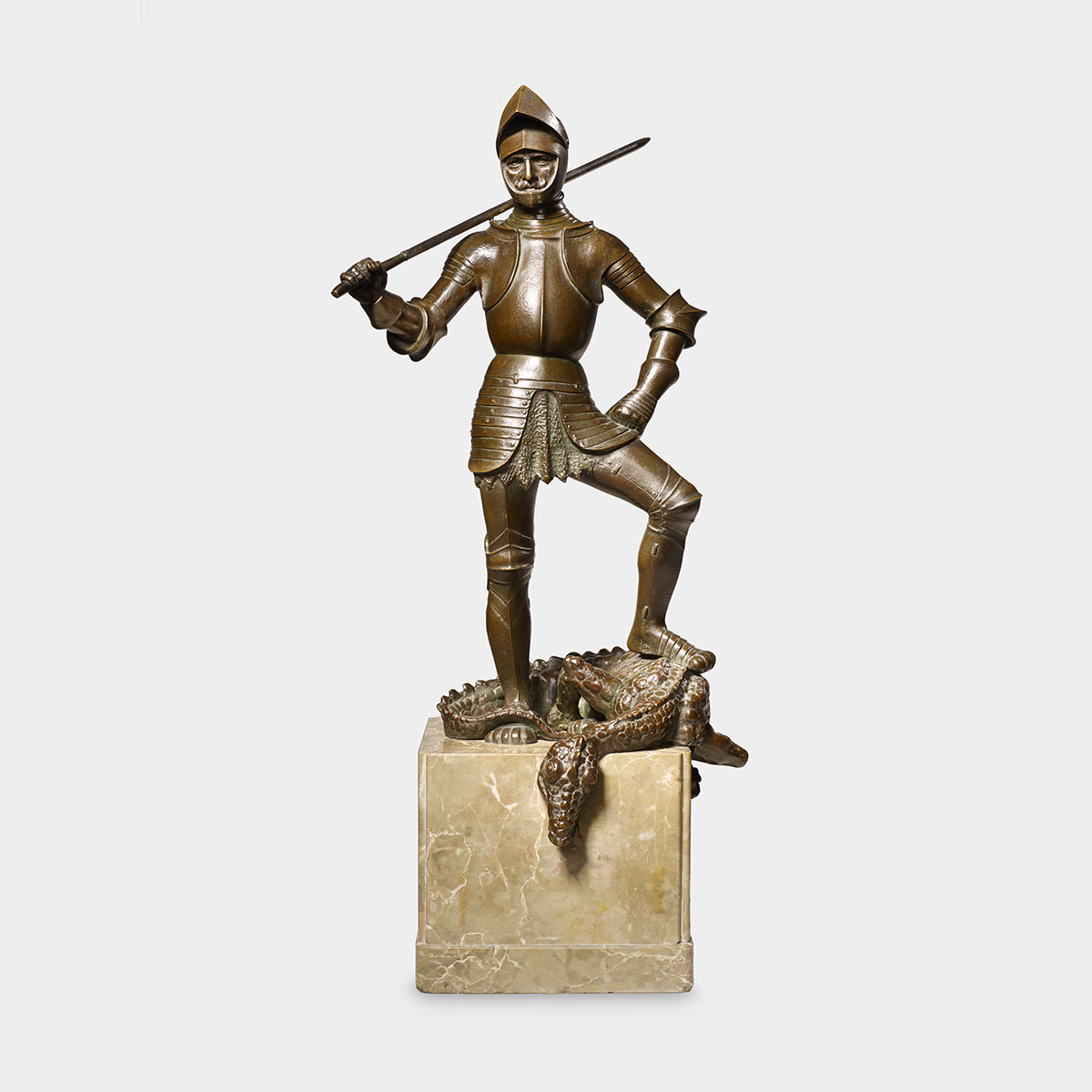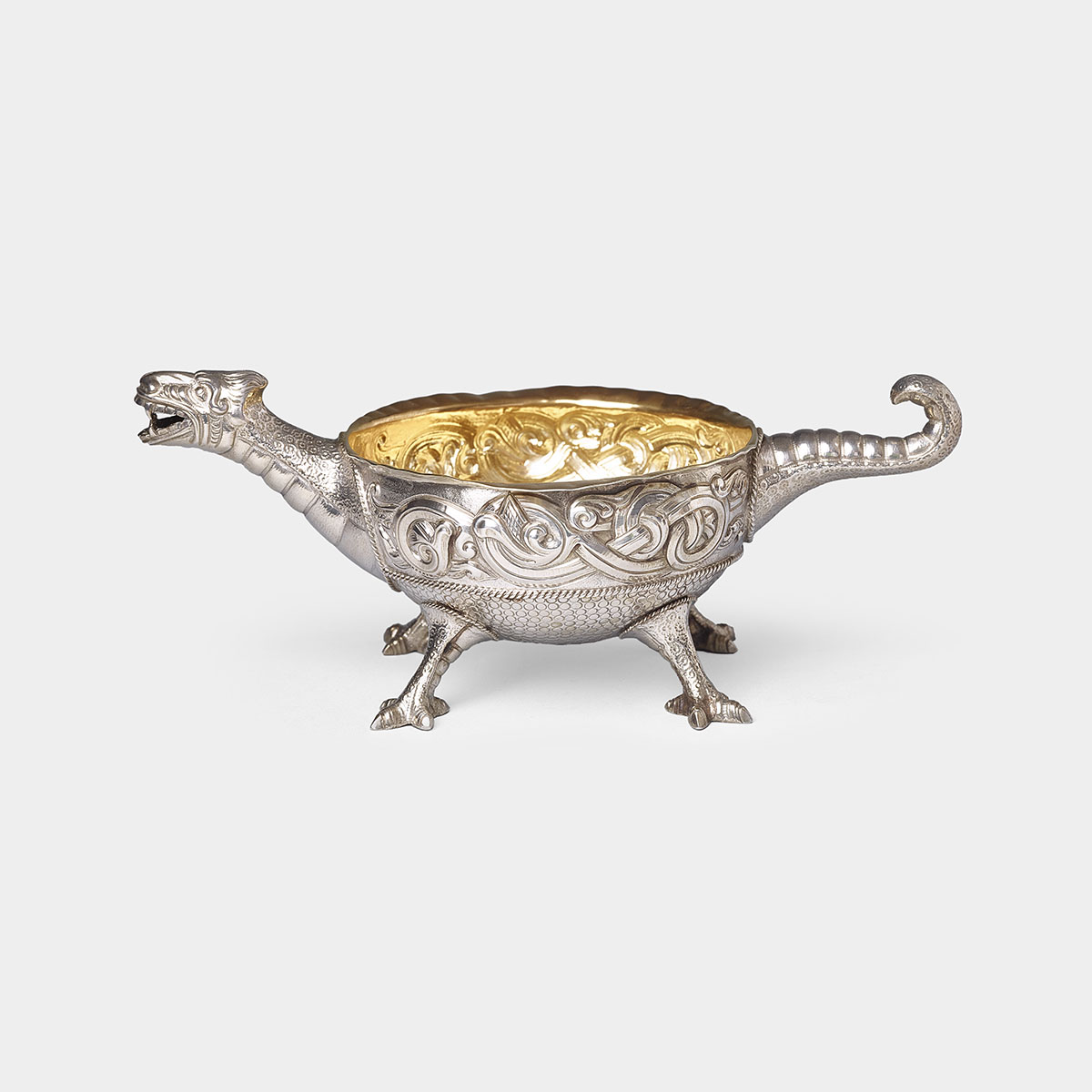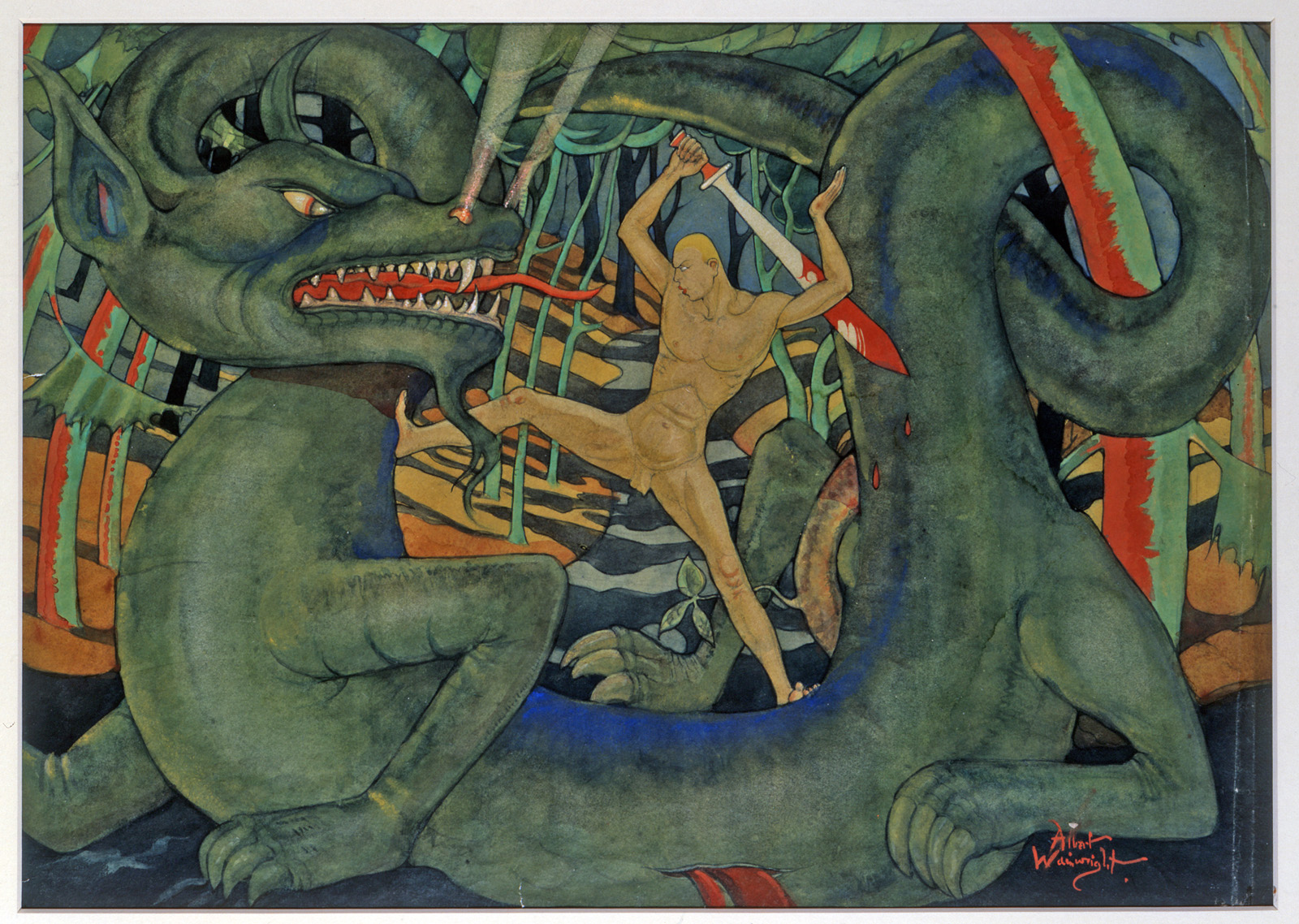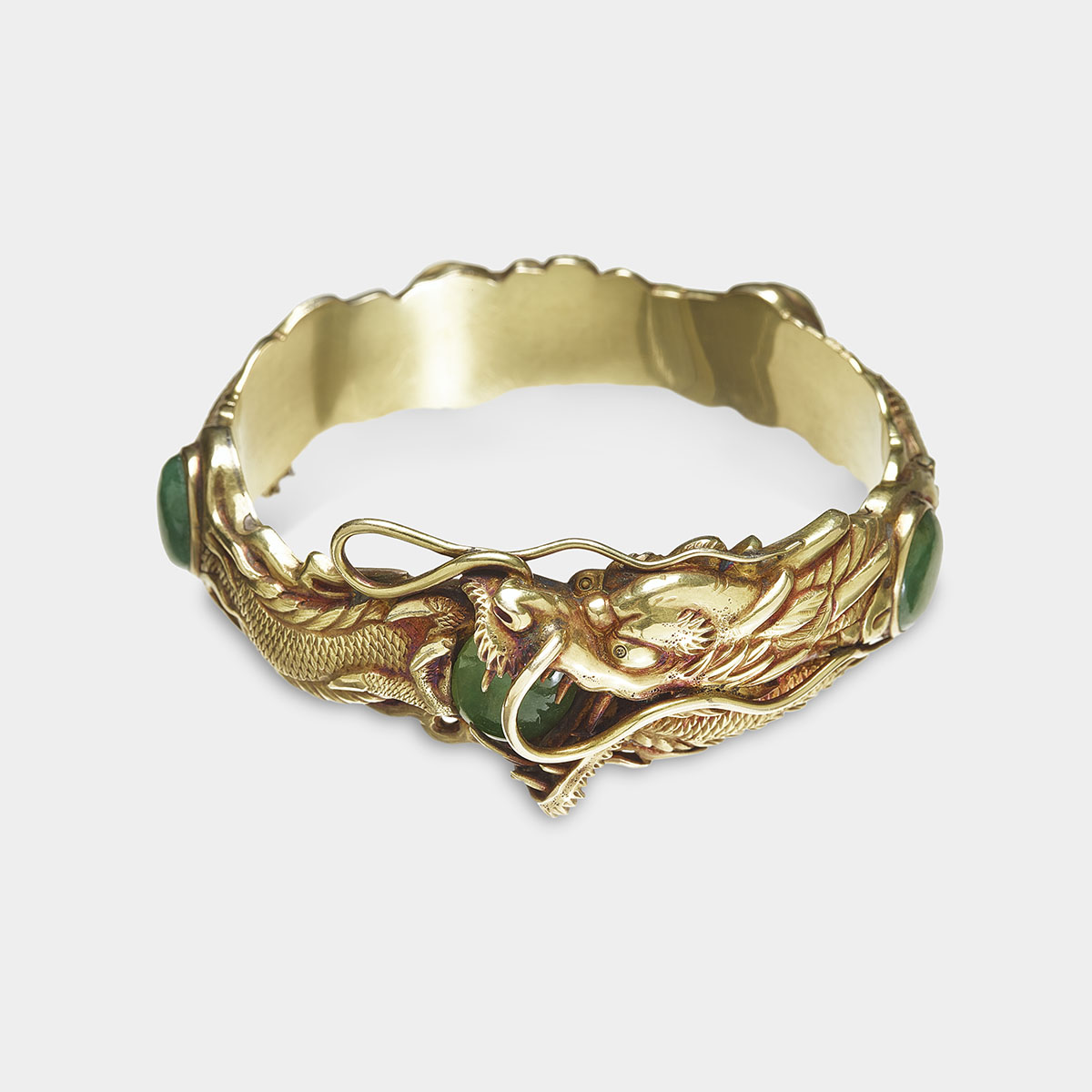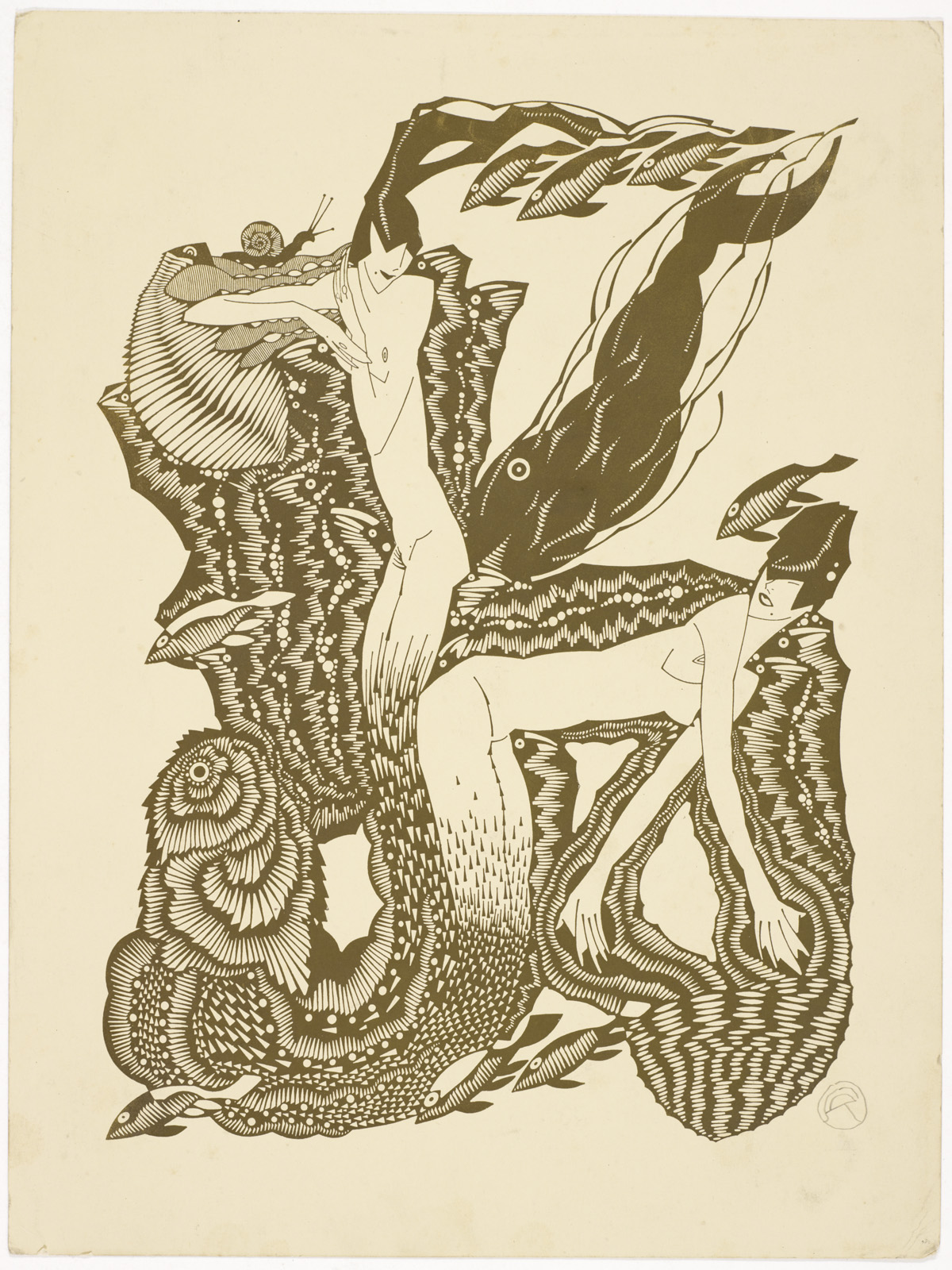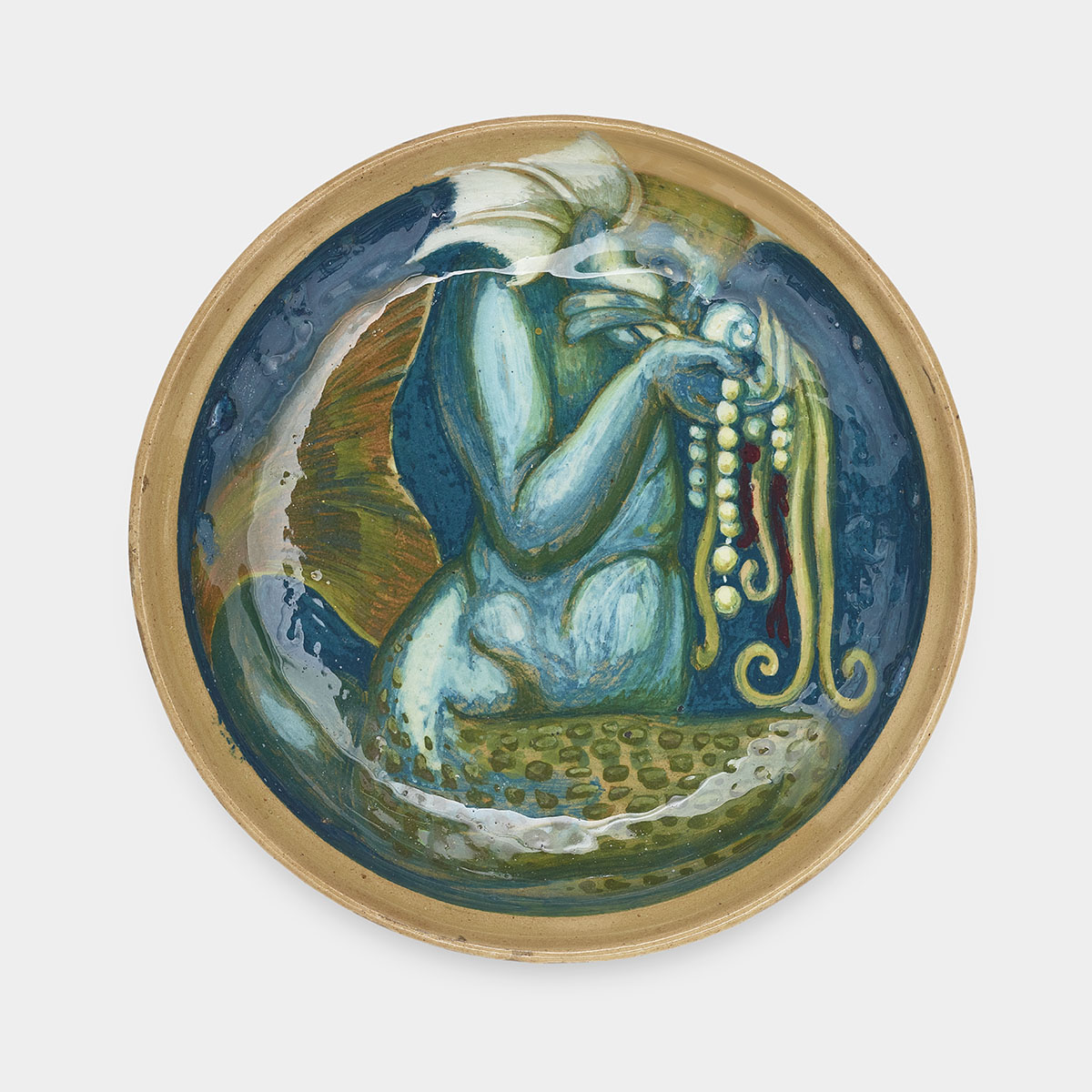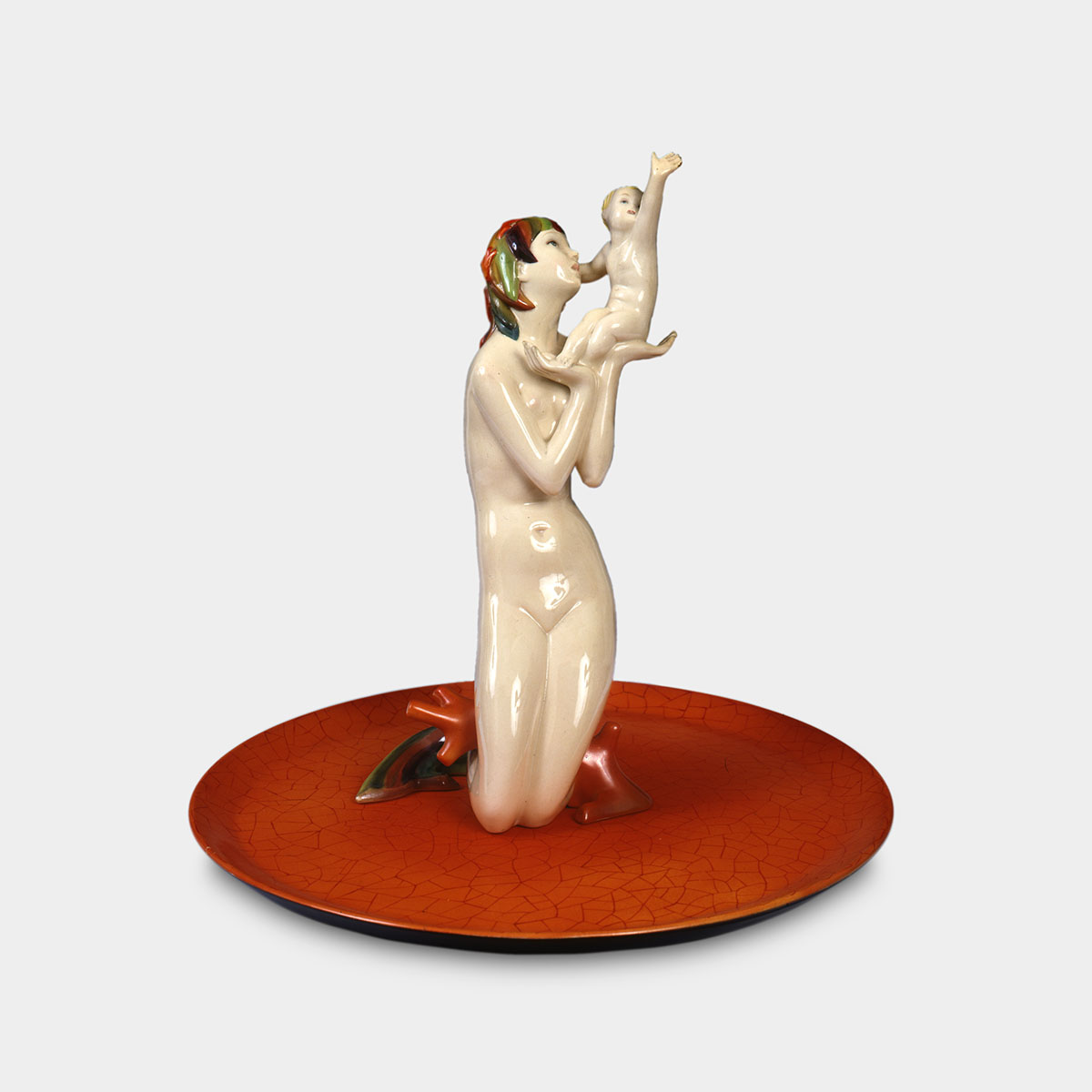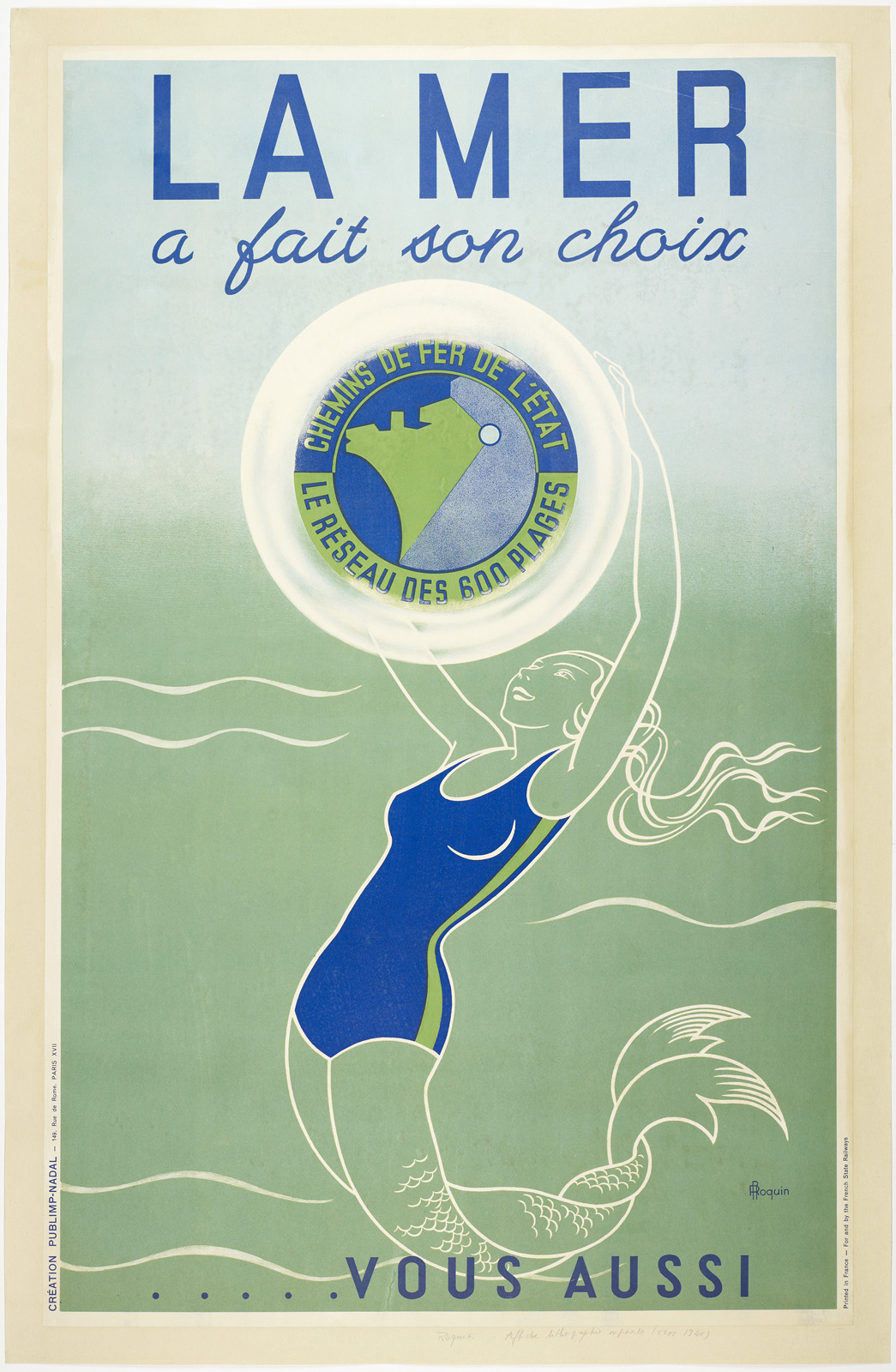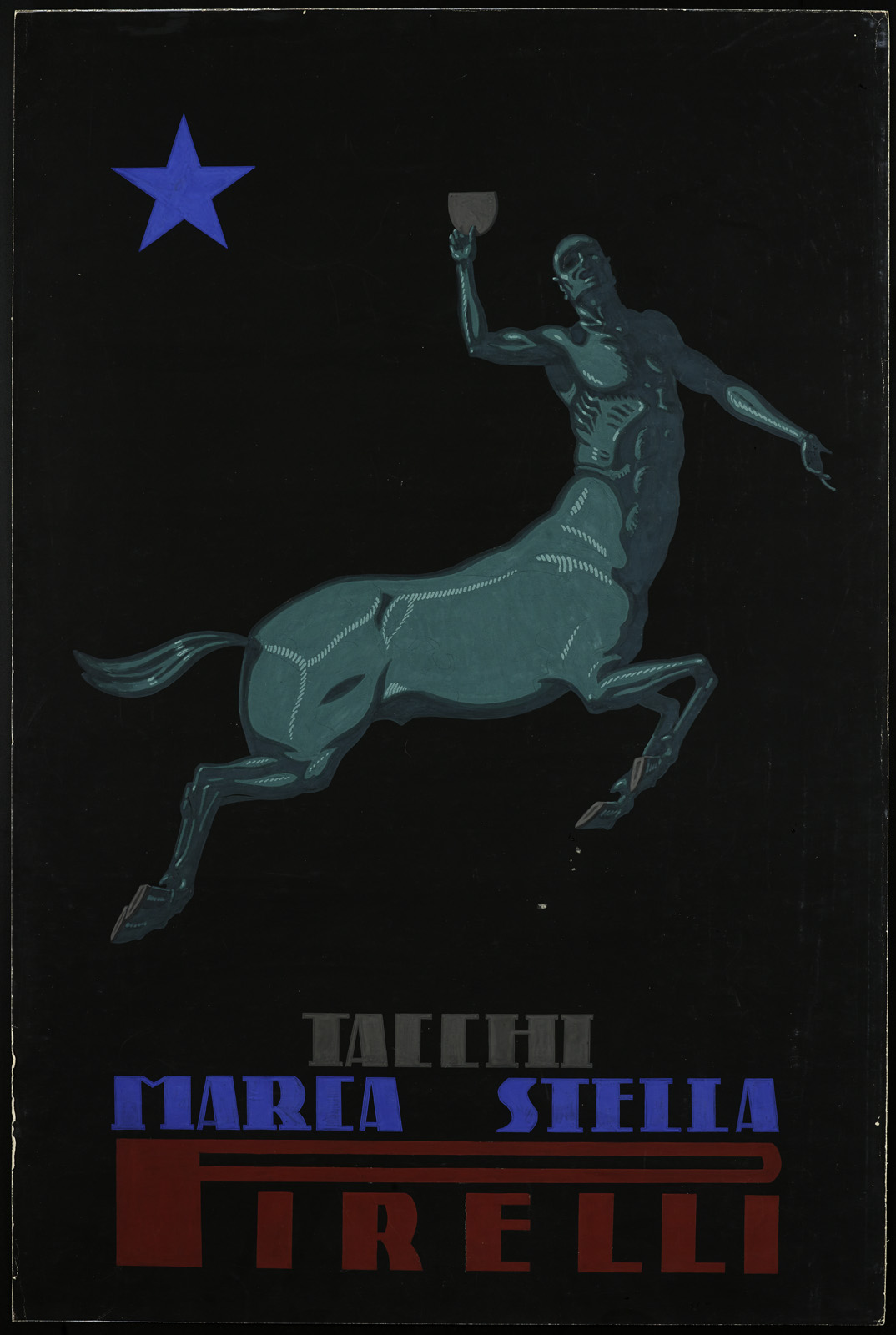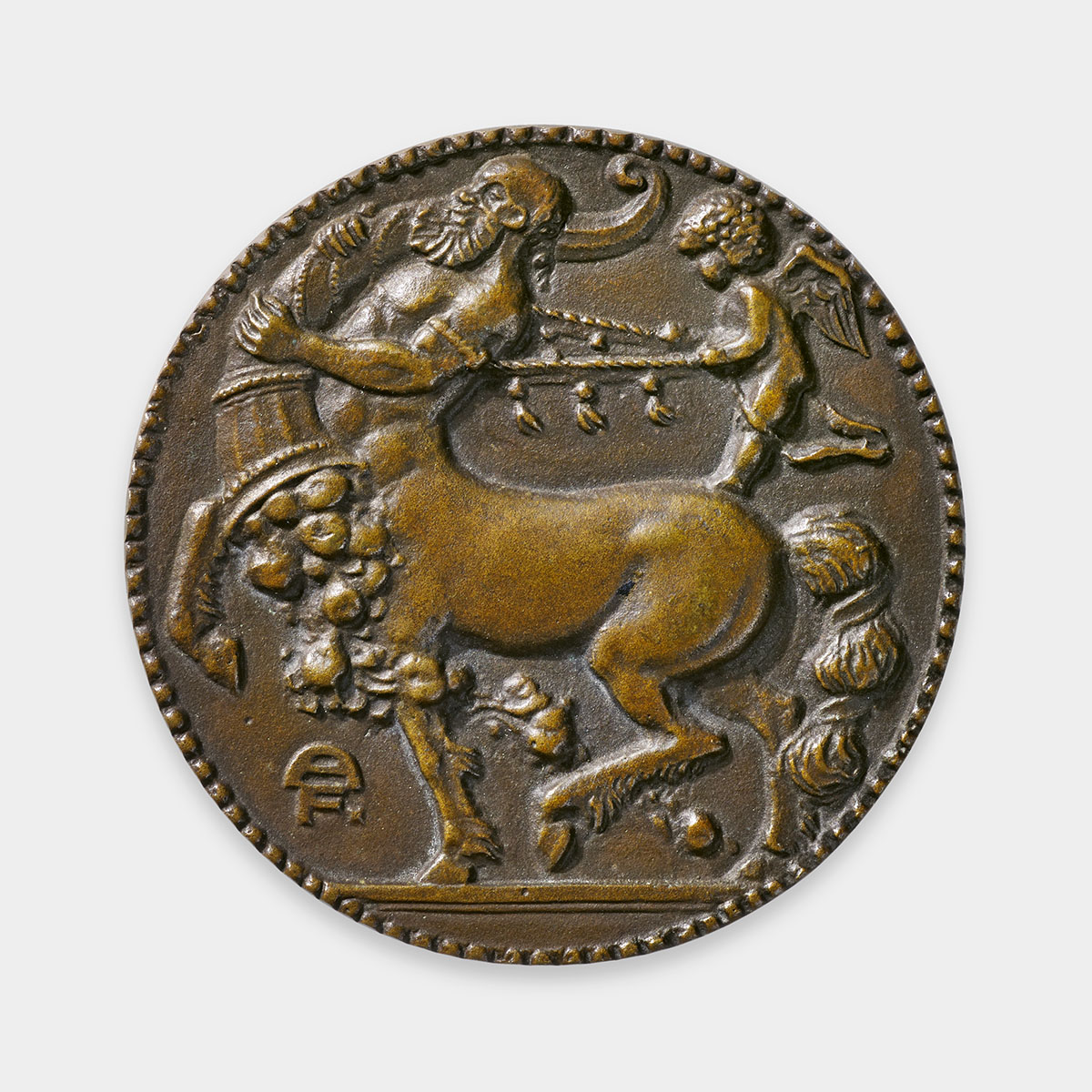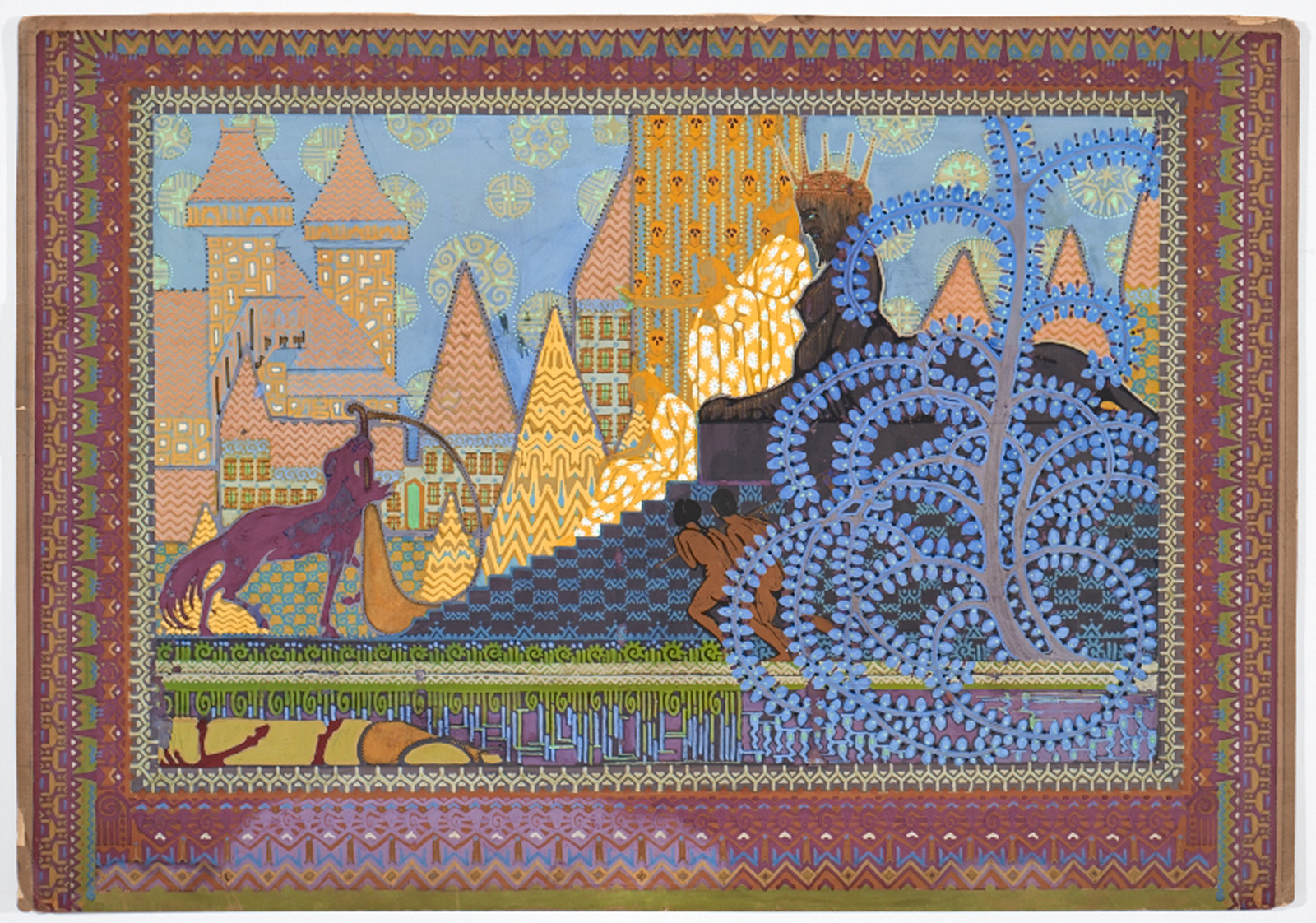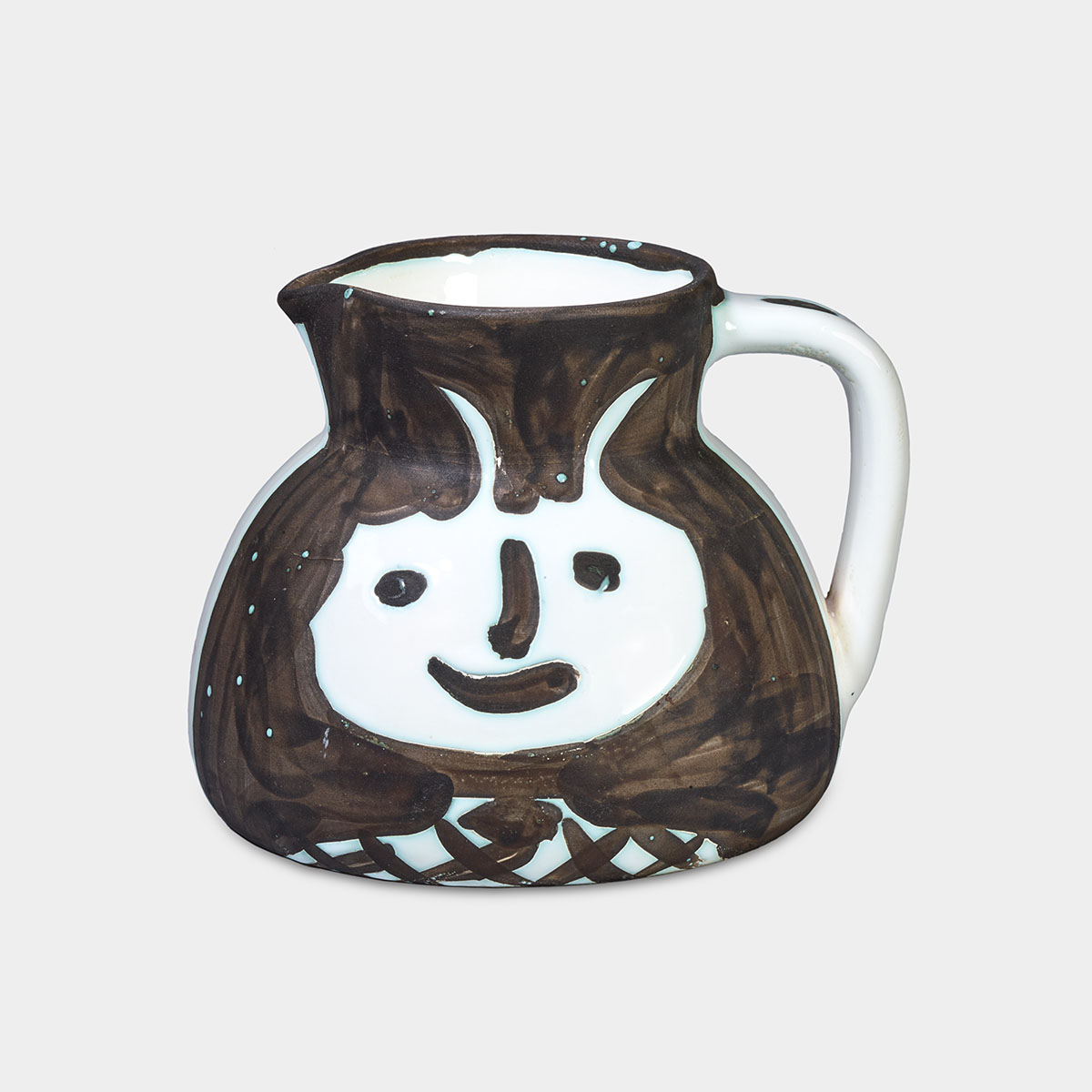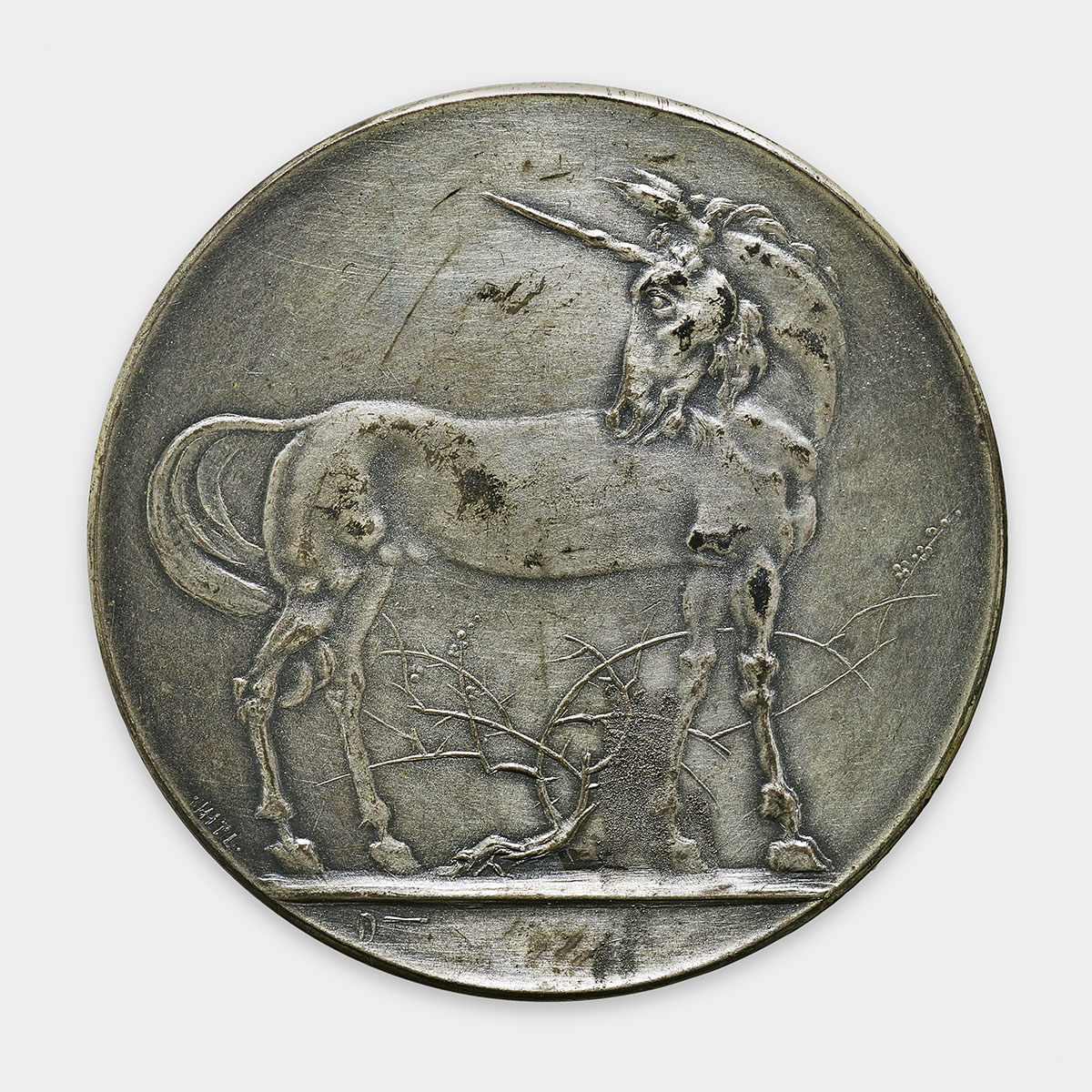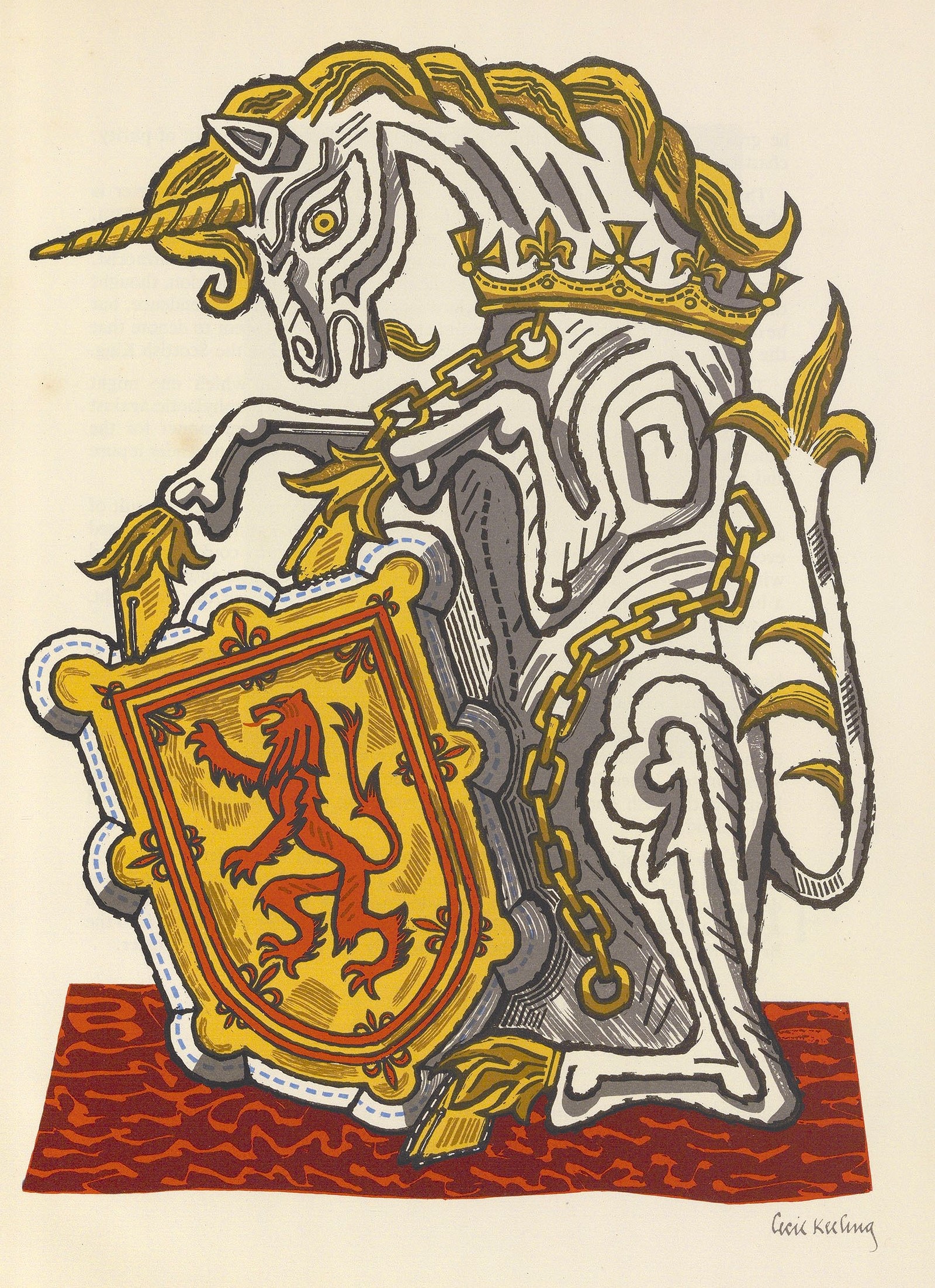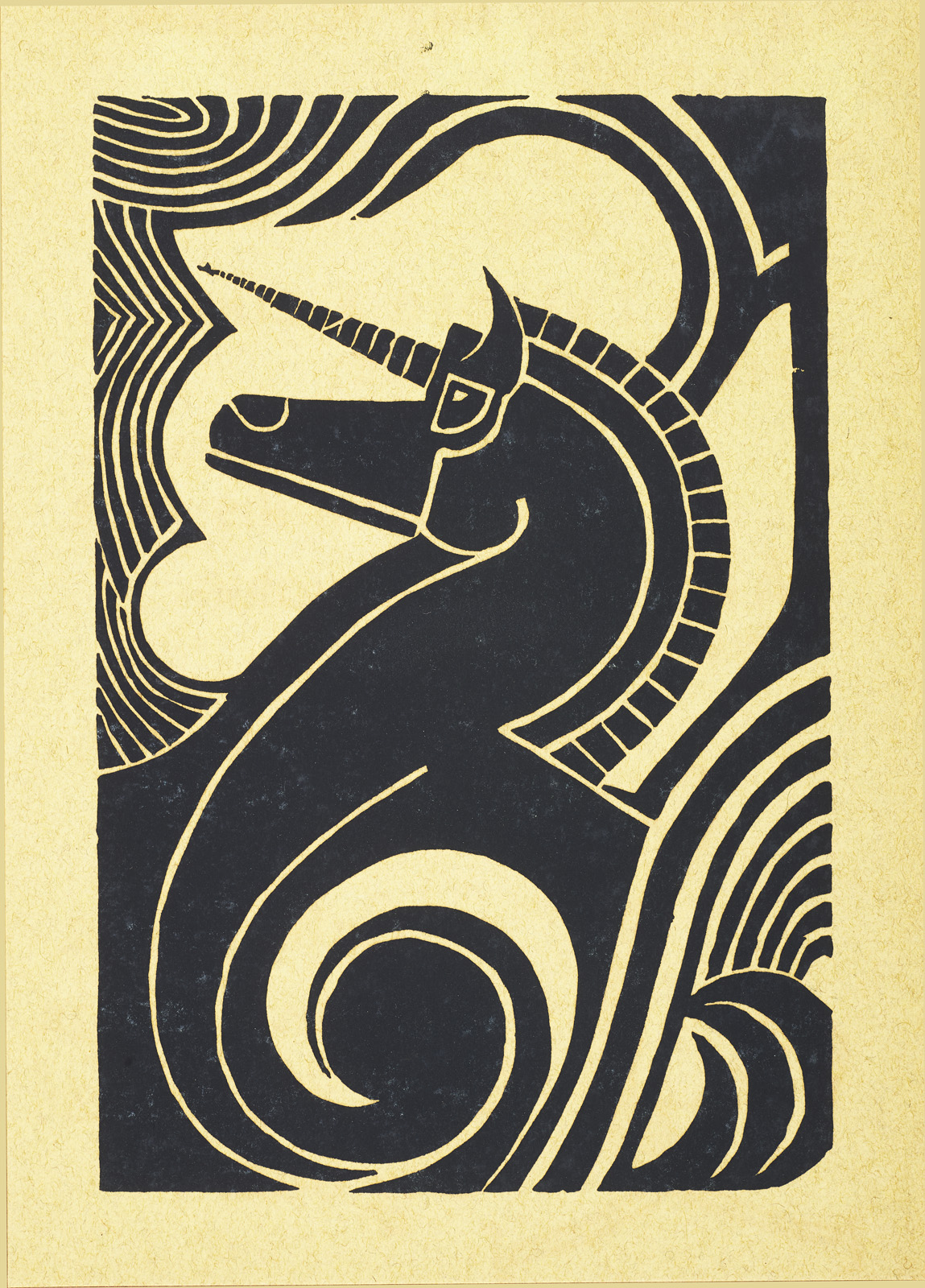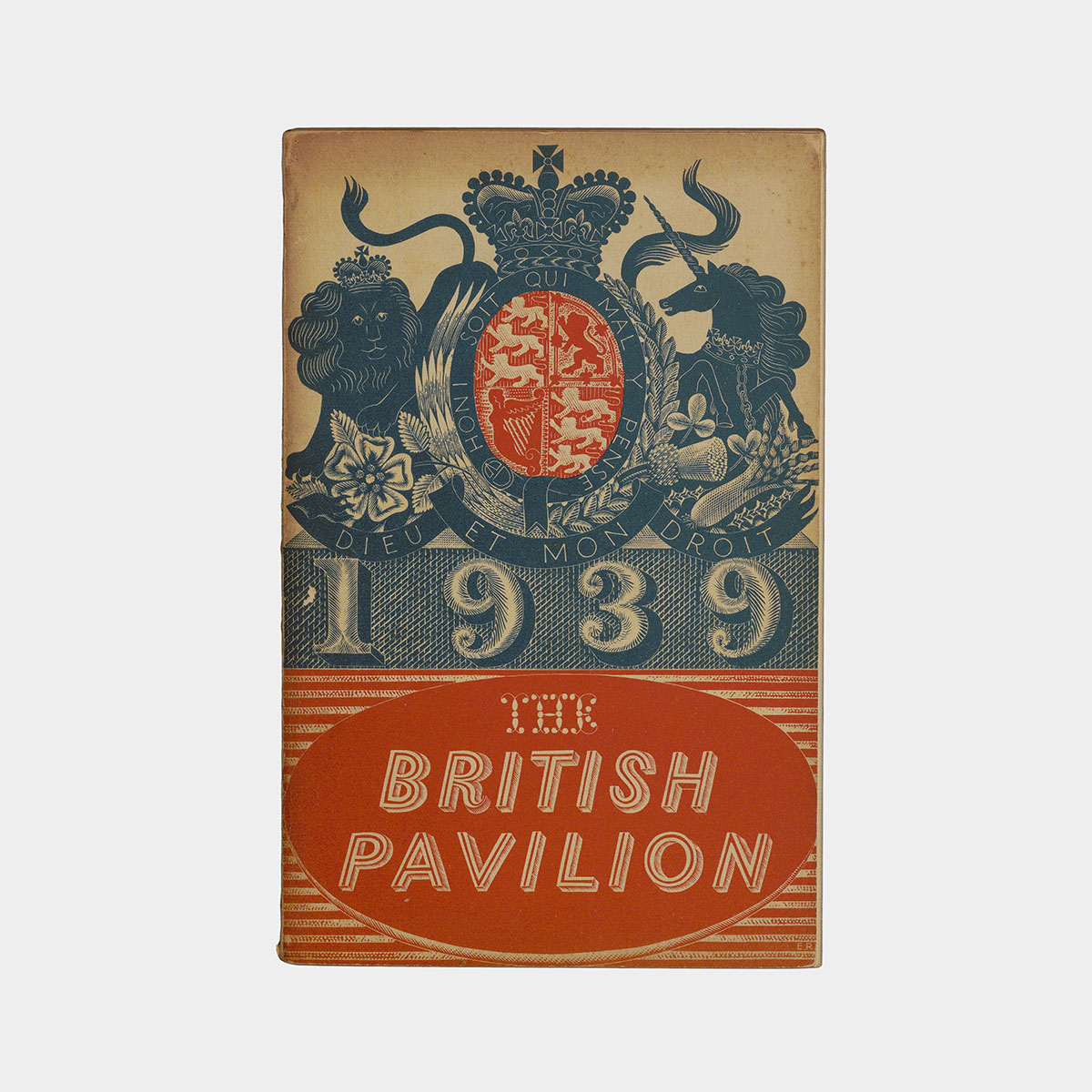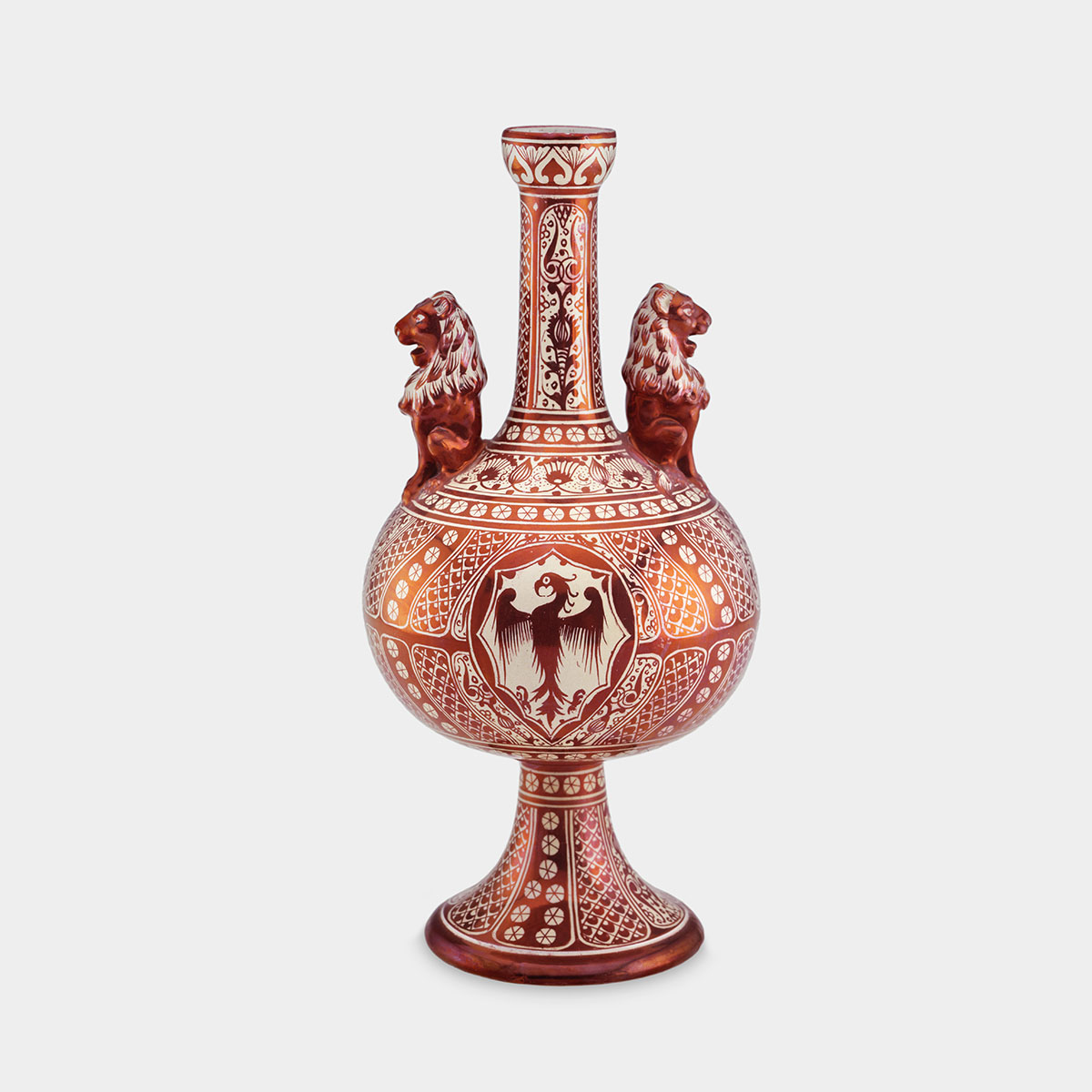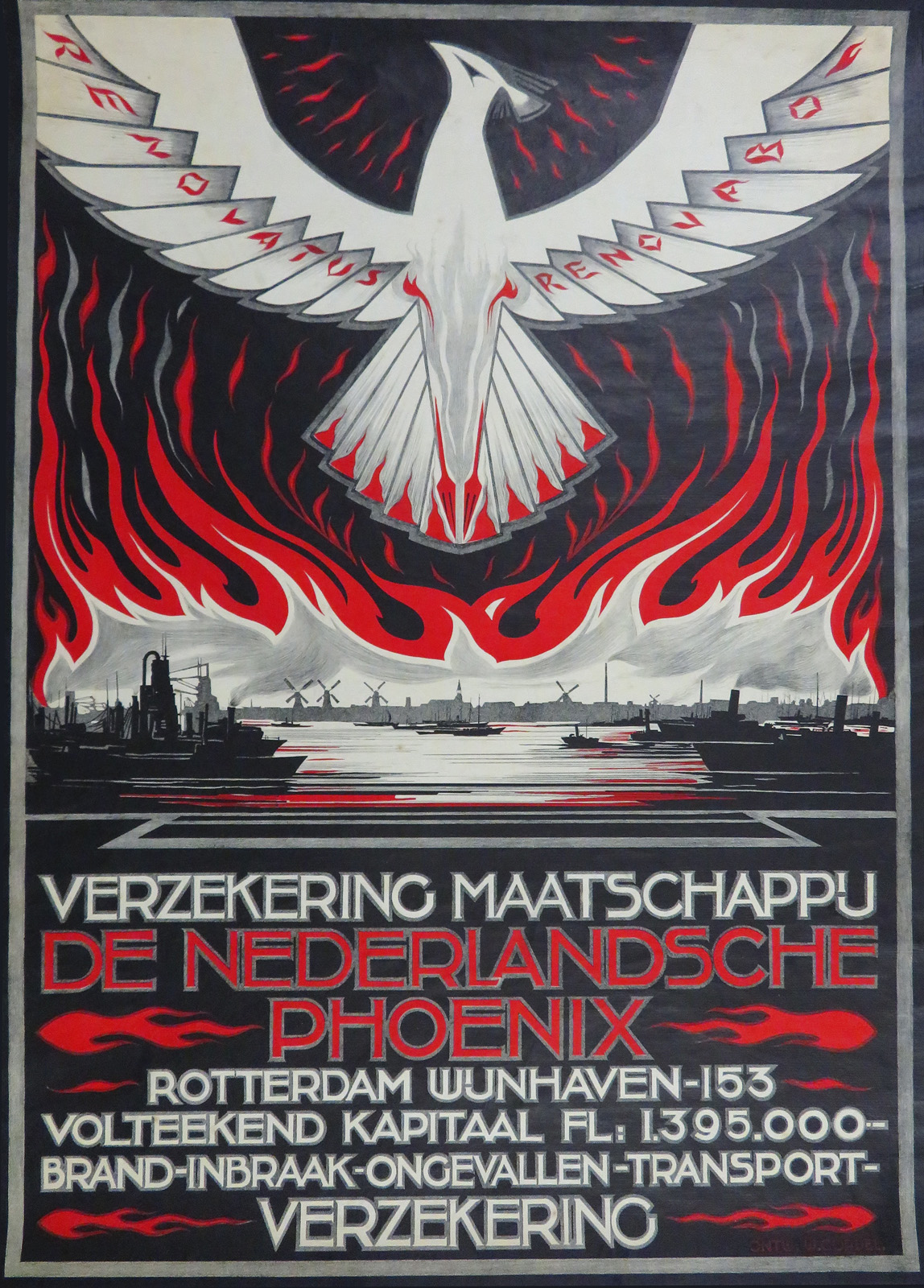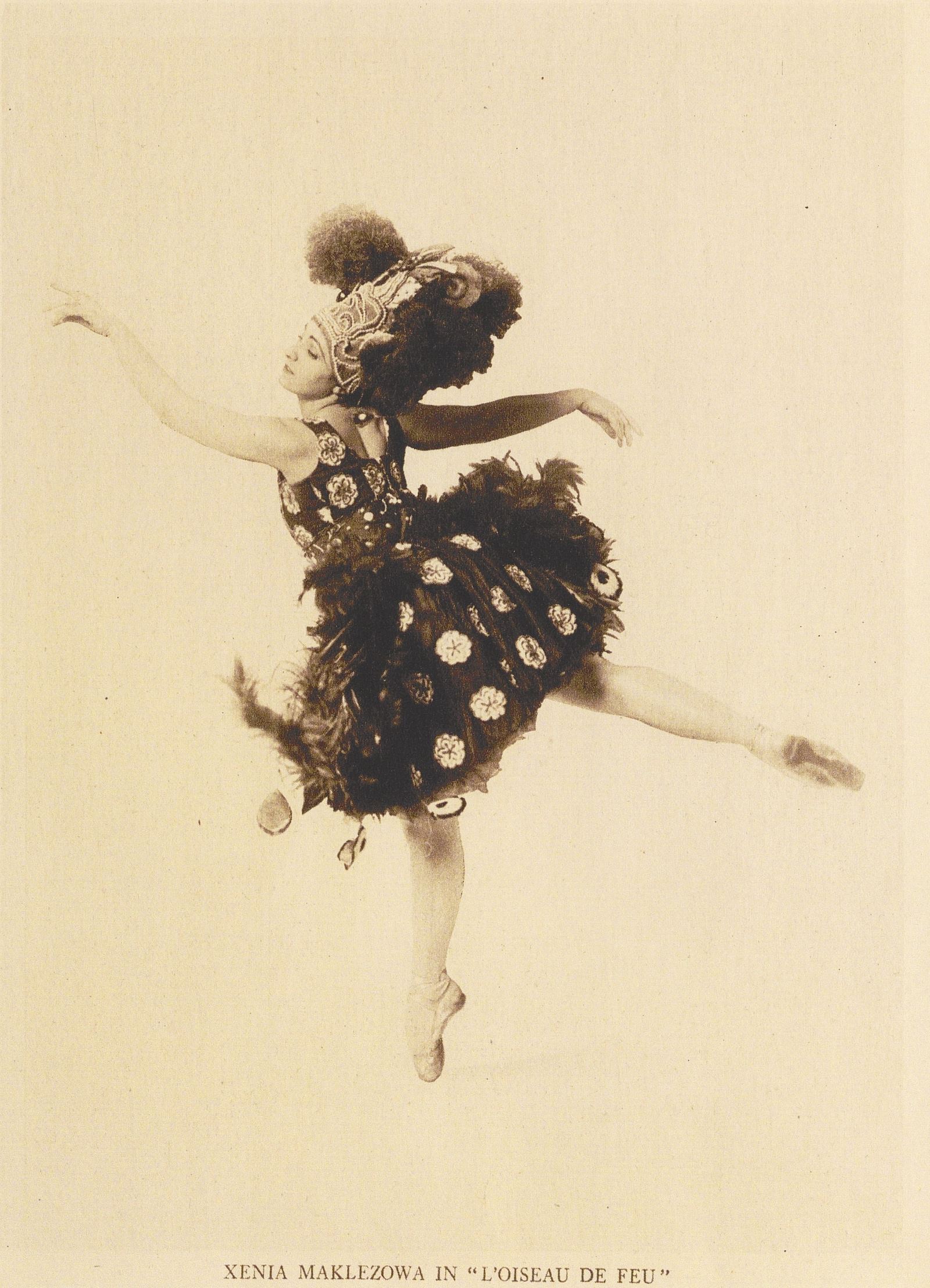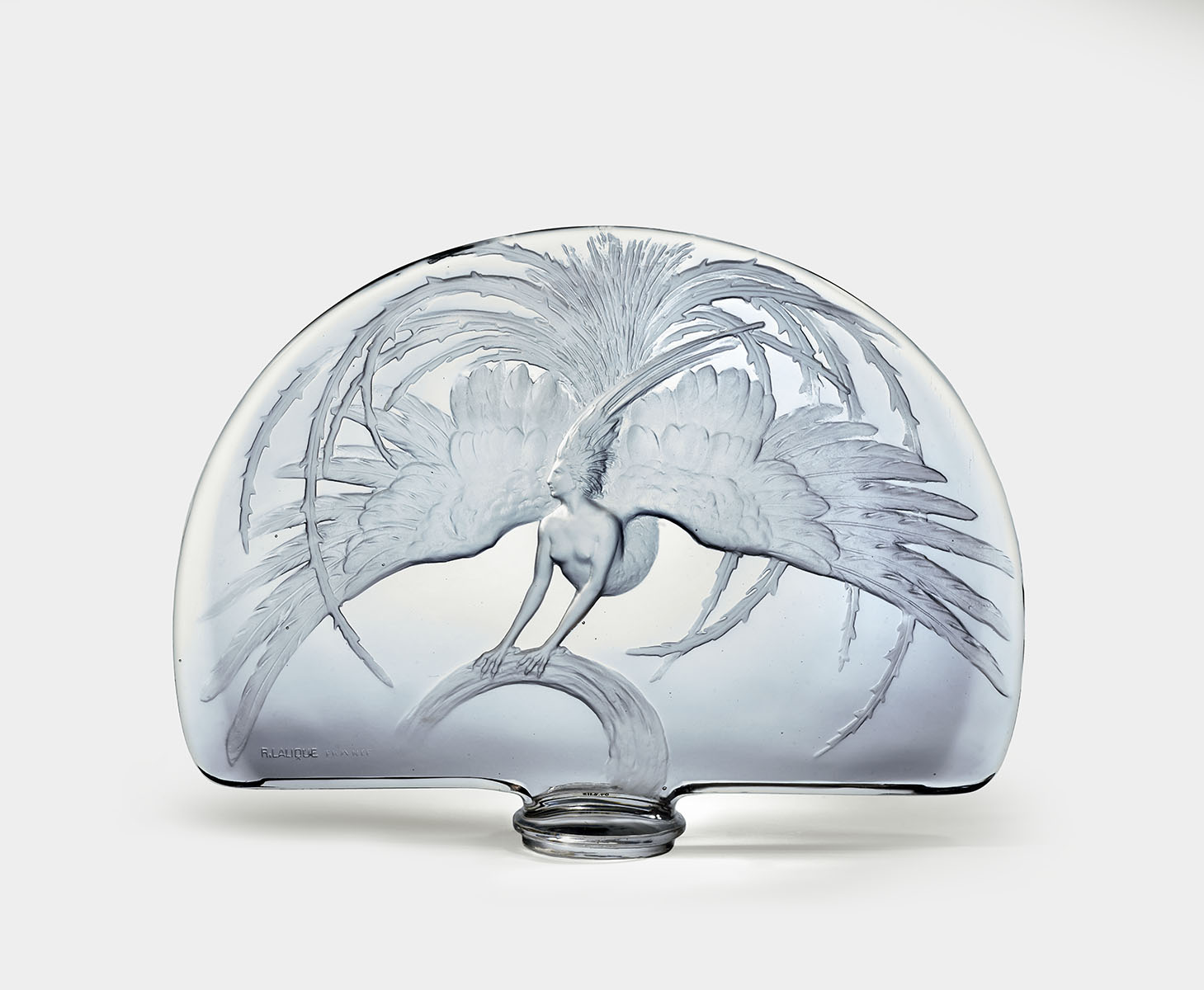Merfolk
Alongside the Kraken, Leviathan, and Scylla, merfolk have been thought to roam the open waters. The half-human, half-fish beings we're familiar with today had a much less glamorous reputation in ancient times. Greek sirens, bird-women who lured sailors to their deaths with enchanting songs, were a fearsome presence associated with danger, rough weather, drowning, and shipwrecks. Yet, other ancient tales of human-fish hybrid creatures, like that of the kulullû in 3rd-millenium BCE Babylonia, considered them positive, protective beings. The terms "siren" and "mermaid" were used interchangeably in later periods to refer to fish-tailed merfolk.
In modern times, mermaids epitomize beauty and feminine ideals. Julius Klinger's mermaid illustrations depict sinuous, nude female figures sensuously posed among fish and seagrass. Other artists, like Romeo Berardi, imagine merfolk as more creature-like. A bowl in the collection, for example, shows a merman with fish-like fins and lips, holding a pile of beads like treasure—evoking the trope of the territorial sea creature hoarding treasure from sunken ships.

